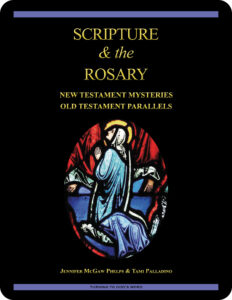redemption
 This week we celebrate the Feast of the Presentation of the Lord, which commemorates the occasion in which Jesus was taken to Jerusalem to be dedicated in the Temple according to the Law. This precedent originated with the tenth plague in Egypt in which God doomed all the firstborn and required that humans and animals had to be bought back or redeemed.
This week we celebrate the Feast of the Presentation of the Lord, which commemorates the occasion in which Jesus was taken to Jerusalem to be dedicated in the Temple according to the Law. This precedent originated with the tenth plague in Egypt in which God doomed all the firstborn and required that humans and animals had to be bought back or redeemed.
In the Gospel According to Luke 2:22–40 (NABRE), this concept of redemption enters the Presentation story, but not where we might expect. The Greek verb λύτρωσις (lytrosis) comes from a word meaning “ransom” or the price for buying back a life.
While this verb does appear in the passage, it’s not used to describe Jesus. It appears rather in the Gospel According to Luke 2:38 (NABRE): “And coming forward at that very time, she gave thanks to God and spoke about the child to all who were awaiting the redemption of Jerusalem.” The evangelist Luke casts Jerusalem rather than the child Jesus as the thing being held for ransom and shows Jesus as that ransom, the salvation of God’s people.
you also may like our study of Scripture & the Rosary (digital only)
 Scripture & the Rosary: New Testament Mysteries, Old Testament Parallels, a 26-lesson Catholic Bible study with an imprimatur, looks at the biblical foundations of the Rosary. The study includes lessons on Pope St. John Paul II’s Rosarium Virginis Mariae (Rosary of the Virgin Mary), the Apostles’ Creed, and the Luminous Mysteries as well as the original 15 Mysteries of the Rosary. Color photographs of stained glass windows depict key scenes in the lives of Jesus and Mary. Free digital lessons rotate throughout the year on our website.
Scripture & the Rosary: New Testament Mysteries, Old Testament Parallels, a 26-lesson Catholic Bible study with an imprimatur, looks at the biblical foundations of the Rosary. The study includes lessons on Pope St. John Paul II’s Rosarium Virginis Mariae (Rosary of the Virgin Mary), the Apostles’ Creed, and the Luminous Mysteries as well as the original 15 Mysteries of the Rosary. Color photographs of stained glass windows depict key scenes in the lives of Jesus and Mary. Free digital lessons rotate throughout the year on our website.
 Click on the picture of the statue of Moses with horns (above) to learn more about Lost in Translation. A new entry is archived each Monday. Contact us to receive Lost in Translation by email every week. You may use any of the contact links on our website to ask Matthew a question.
Click on the picture of the statue of Moses with horns (above) to learn more about Lost in Translation. A new entry is archived each Monday. Contact us to receive Lost in Translation by email every week. You may use any of the contact links on our website to ask Matthew a question.
